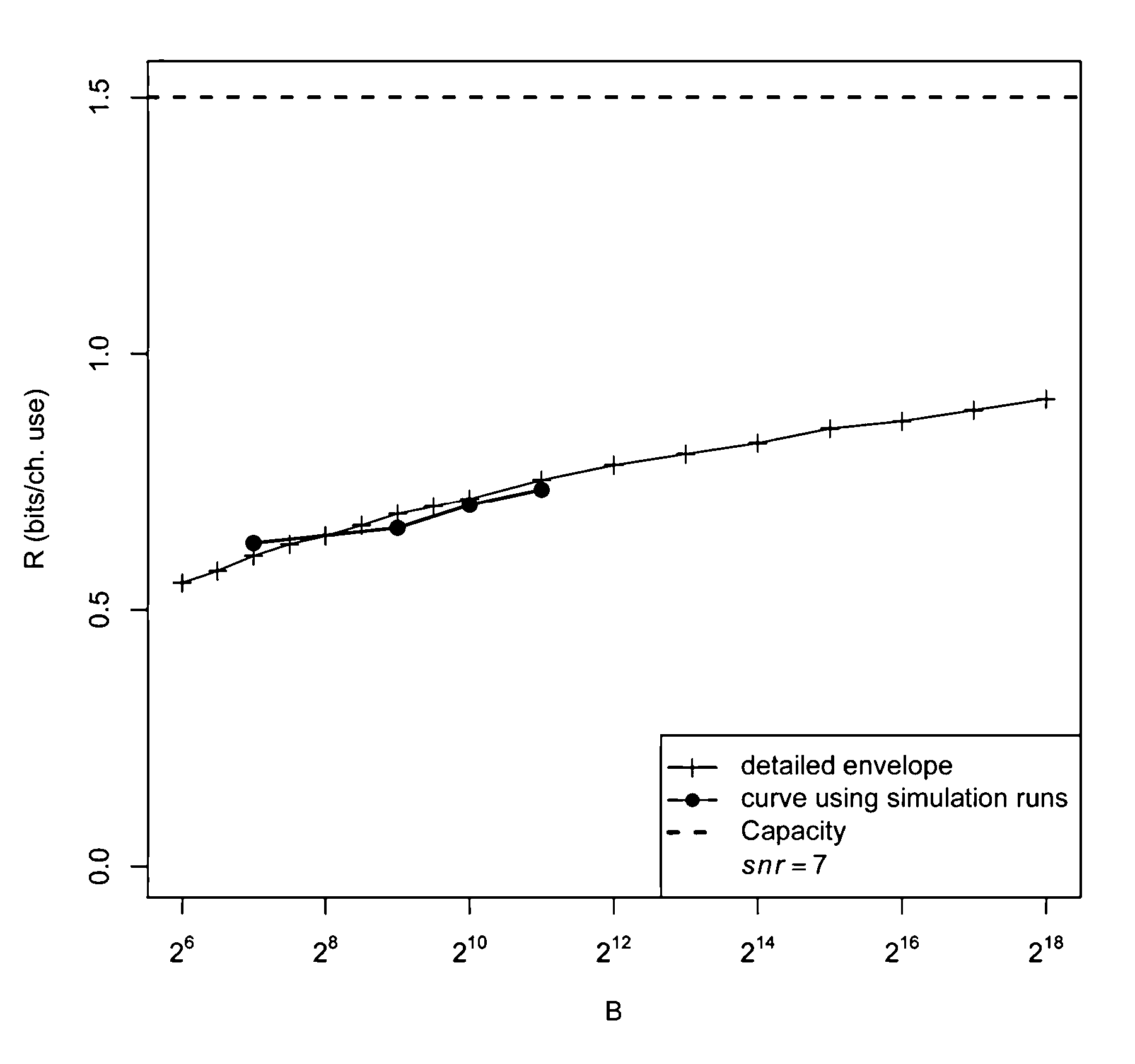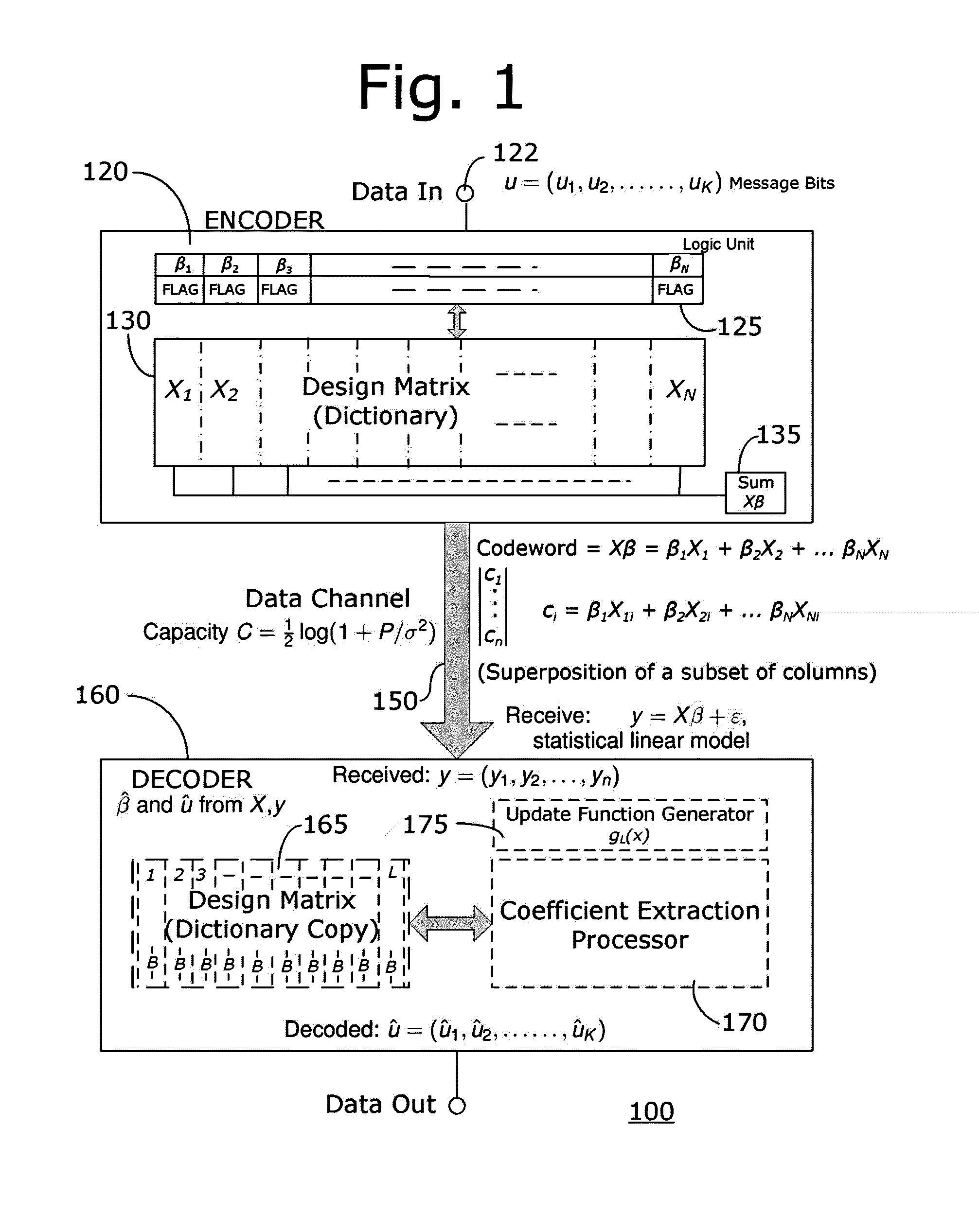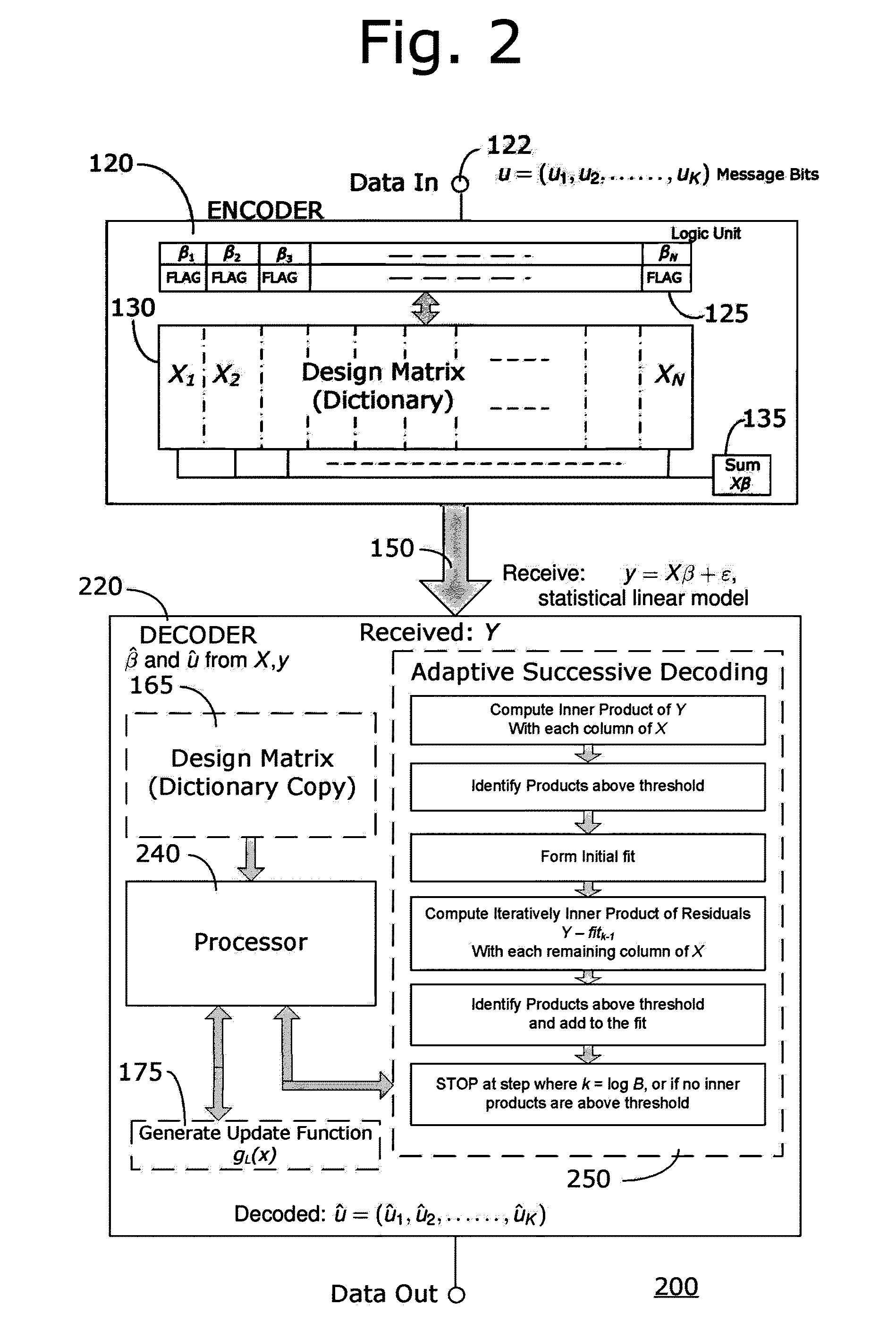Sparse superposition encoder and decoder for communications system
- Summary
- Abstract
- Description
- Claims
- Application Information
AI Technical Summary
Benefits of technology
Problems solved by technology
Method used
Image
Examples
case 1
[0803]
[0804]h′=h+hf: Now optimize the second line of the rate drop when h′=h+hf. This leads to the following lemma.
[0805]Lemma 41.
[0806]Optimization of the second line of Δ. For any given positive η providing the exponent εη of the error probability, the values of the parameters 111, f* are specified to optimize their effect on the communication rate. The second line Δsecond of the total rate drop (−R) / bound Δ is the sum of three terms
Δm+Δ f*+Δη(x*),
plus the negligible ΔL=2 / (Lν)+(m−1) / (L log B)+ε3. Here
Δm=vc(x*)m-1+logmlogB
is optimized at a number of steps m equal to an integer part of 2+νc(x*)log B at which Δm is not more than
1logB+log(2+vc(x*)logB)logB
Likewise Δ f* is given by
ϑf_*-log(f_*2π2logB)logB,
where θ=snr(2+1 / 2). The above is optimized at the false alarm level f*=1 / [θ log B] at which
Δf_*=1logB+log(ϑlogB / 4π)logB.
The Δη(x*) is given by
Δη(x*)=ηstd[ν+(1−x*ν)snr / 2]+(ρ−1) / log B+h
which is bounded by.
ηstdθ1+(ρ−1) / log B+h
where θ1=ν+snr / 2.
[0807]Remark:
[0808]Since 1−x*=r / (snrτ2) an...
case 2
[0816]
[0817]1−h′=(1−h)m−1 / (1+h)m−1. It is easy to that this implies that h′≦2mh. The corresponding Lemma for optimization of rate drop for such h′ is presented.
[0818]Lemma 42.
[0819]Optimization of the second line of Δ. For any given positive η providing the exponent εη of the error probability, the values of the parameters m. f* are specified to optimize their effect on the communication rate. The second line Δsecond of the total rate drop (−R) / bound Δ is the sum of three terms
Δm+Δ f*+Δη(x*),
plus the negligible ΔL=2 / (Lν)+(m−1) / (L log B)+ε3. Here
Δm=vc(x*)m-1+logmlogB
is optimized at a number of steps m* equal to an integer part of 2+νc(x*)log B at which Δm is not more than
1logB+log(2+vc(x*)logB)logB
Likewise Δ f* is given by
ϑf_*-log(f_*2π2logB)logB,
where θ=snr / 2. The above is optimized at the false alarm level f*=1 / [θ log B] at which
Δf_*=1logB+log(ϑlogB / 4π)logB.
The Δη(x*) is given by
Δη(x*)=ηstd[ν+(1−x*ν)snr / 2]+(ρ−1) / log B+2m*h
which is bounded by,
ηstdθ1+(ρ−1) / log B+2m*h
where θ1=ν+sn...
PUM
 Login to View More
Login to View More Abstract
Description
Claims
Application Information
 Login to View More
Login to View More - R&D
- Intellectual Property
- Life Sciences
- Materials
- Tech Scout
- Unparalleled Data Quality
- Higher Quality Content
- 60% Fewer Hallucinations
Browse by: Latest US Patents, China's latest patents, Technical Efficacy Thesaurus, Application Domain, Technology Topic, Popular Technical Reports.
© 2025 PatSnap. All rights reserved.Legal|Privacy policy|Modern Slavery Act Transparency Statement|Sitemap|About US| Contact US: help@patsnap.com



